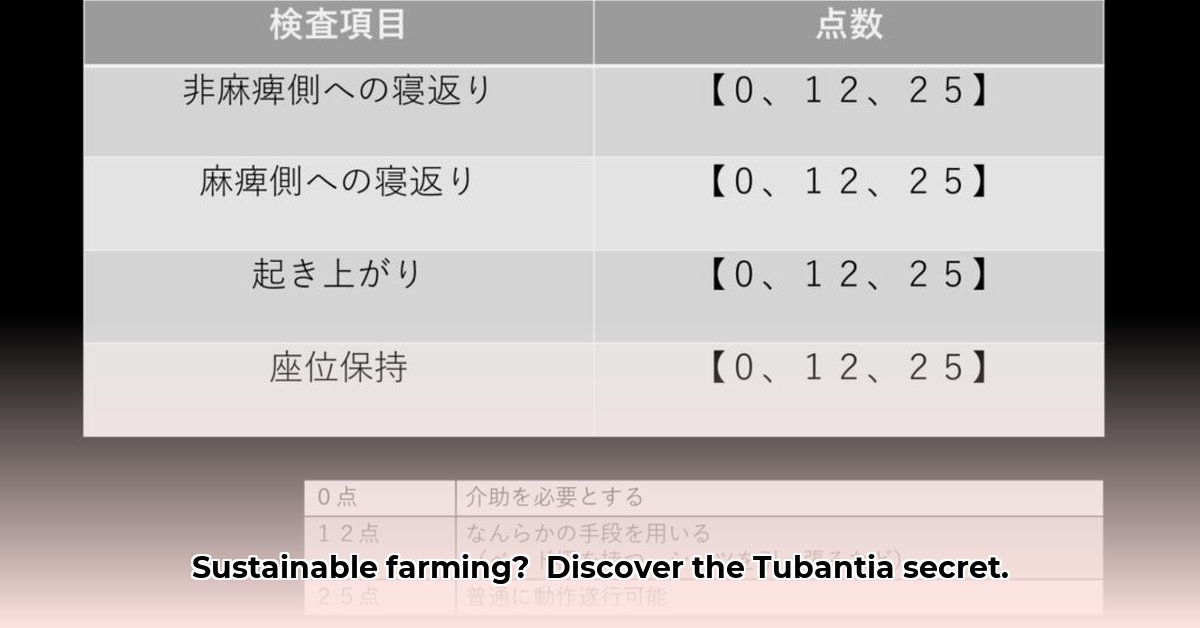
Understanding Tct Tubantia's Approach to Sustainable Farming
Tct Tubantia isn't just another farming company; it's a pioneering force driving innovation in sustainable agriculture. Their approach centres around maximising yields while minimising environmental impact, making it a smart and responsible way to cultivate food. They achieve this through a combination of meticulous planning, cutting-edge technology, and a data-driven approach to farming. Essentially, it's farming optimised for efficiency and environmental consciousness. But how do they actually do it? For more on US farming techniques, see this useful resource.
The Technology Behind Tct Tubantia's Success
Tct Tubantia leverages precision agriculture techniques, harnessing technology to monitor and manage various aspects of crop production. This includes using sensors to track vital factors such as soil moisture, nutrient levels, and weather patterns. This real-time data allows for precise resource allocation, optimising water and fertiliser usage, and leading to significant reductions in waste. "We're not just farming; we're farming smart," says Dr. Sarah Chen, Lead Agricultural Scientist at Tct Tubantia. "Our data-driven approach ensures we're using resources efficiently and sustainably."
Furthermore, Tct Tubantia incorporates automation into their processes. This includes automated systems for planting, weeding, and harvesting, reducing labour costs and improving efficiency. Imagine robots tending to your crops, ensuring optimal growth conditions – that's the kind of precision that Tct Tubantia is bringing to the table. This automation allows for a more consistent and higher-quality yield. But it's not just about the technology; it's also about the know-how.
Implementing Tct Tubantia's Methods on Your Farm: A Step-by-Step Guide
Adopting Tct Tubantia's principles doesn't require a complete farm overhaul. Instead, it's a gradual integration of their methods into your existing practices. Here’s a practical, step-by-step guide to help you get started:
Assess Your Current Practices: Begin by evaluating your current farming methods. Identify areas of inefficiency, high resource consumption, or environmental impact. Focus on one or two key areas for improvement to start. This initial assessment forms the foundation for making targeted changes.
Data Collection: Start gathering data—even basic records can make a significant difference. Track soil moisture levels, yields, and fertiliser usage. This creates a baseline for measuring improvement and identifying areas needing attention. Consider using simple, affordable sensor technology to enhance data collection.
Selective Automation: Explore opportunities for automation. Start with smaller, easier-to-implement systems before investing in larger-scale automation. This phased approach minimises risk and allows you to assess the return on investment before further expansion.
Incorporate Sustainable Practices: Introduce established sustainable farming techniques such as crop rotation, cover cropping, and integrated pest management. These methods improve soil health and minimise the need for synthetic inputs, reducing your environmental footprint and promoting long-term soil fertility.
Seek Expert Guidance: Don't hesitate to seek help from agricultural experts. Several resources and consultants can provide guidance and support throughout this transition. A collaborative approach often yields the best results.
Continuous Improvement: Farming is an adaptive process. Regularly review your data, adapt your strategies, and share your learning. Join farming communities and online forums to learn from others’ experiences.
The Advantages and Challenges of Tct Tubantia's Approach
Tct Tubantia's sustainable farming methods, while offering significant benefits, also present certain challenges:
| Advantages | Disadvantages |
|---|---|
| Increased yields and resource efficiency | Higher initial investment in technology and training |
| Reduced environmental impact | Reliance on technology and data infrastructure |
| Enhanced food security and profitability | Potential for technical issues and data breaches |
| Improved product quality and consistency | Need for specialized skills and knowledge |
| Reduced labour costs through automation | Potential for increased complexity in farm management |
The Future of Farming: A Sustainable and Technologically Advanced Approach
Tct Tubantia's approach symbolises a significant shift toward a more sustainable and technologically advanced agricultural sector. It demonstrates that environmentally conscious farming isn't just a noble pursuit—it's a viable and profitable business model. By combining technology, data analysis, and sustainable practices, farmers can enhance productivity while safeguarding the environment. The future is not about working harder but working smarter, and Tct Tubantia is showing us the way. This is a future where we can feed a growing global population while protecting our planet, and it's a future well worth investing in.